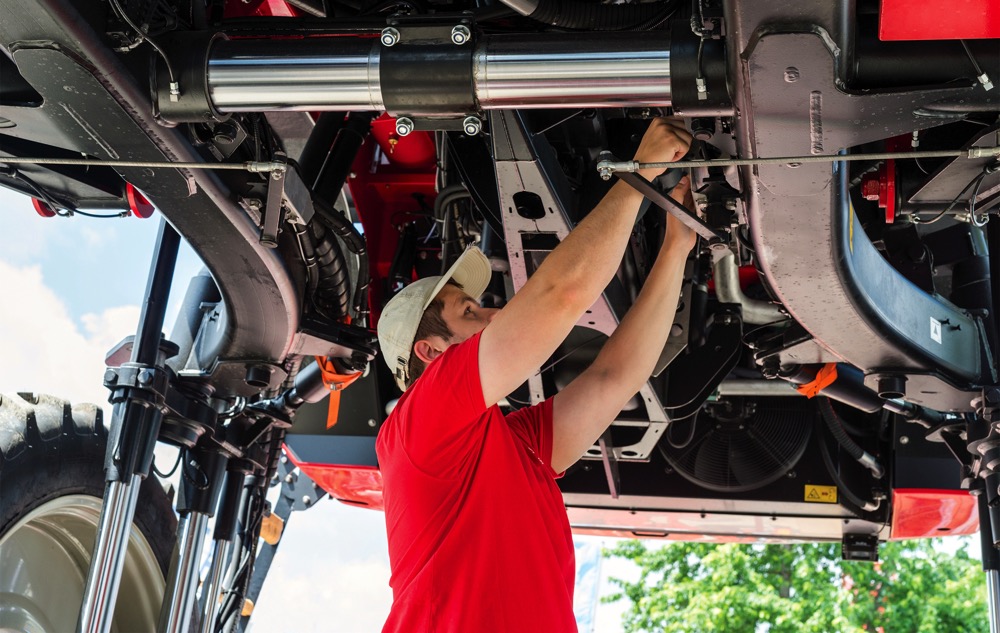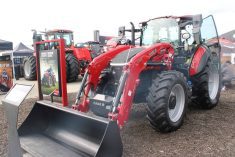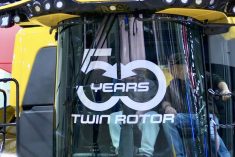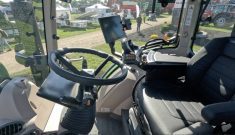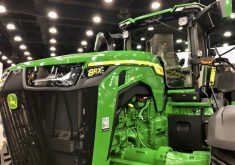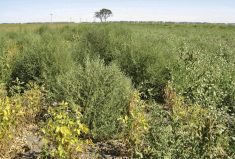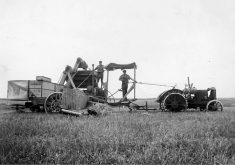[UPDATED: Feb. 25, 2020] By all means, get that tractor running like new, but watch out if you’re changing how it functions.
That was the message 2020 attendees of CropConnect in Winnipeg were told as Eric Wareham, U.S. vice-president of government affairs with the Western Equipment Dealers Association, took the podium.
“We as an industry support the right to repair your equipment, not to modify it,” he said.
Ag technician shortages, loosely defined legal regulations and rapid changes to equipment are making farmers question what they can and can’t do while working on their machinery, Wareham told the room.

“We (Western Equipment Dealers Association) will always support a farmer’s right to do basic repairs and maintenance of their machines. We want to keep your machines up and running,” he said.
Demand for farm technicians is on the rise, partially due to hesitancy to make repairs on a brand new machine.
Farmers may be concerned with buying a new piece of equipment, having an unforeseen error and getting stranded with no ability to make a basic repair.
During harvest when time is in short supply, farmers may not want to waste extra time diagnosing or waiting for a technician to make a repair they feel they could have done themselves.
Which is which?
Read Also

Mazergroup’s Bob Mazer dies
Mazergroup’s Bob Mazer, who helped grow his family’s company into a string of farm equipment dealerships and the main dealer for New Holland machinery in Saskatchewan and Manitoba, died July 6 from cancer.
Looking at modern machinery, what counts as a repair versus a modification?
“Manipulating your tractor’s proprietary software or messing with your emissions regulator, things like that would classify as modifications,” Wareham said, “whereas diagnosing a broken sensor, doing mechanical repairs or changing tires to tracks are all things that count as repairs and are fully encouraged.”
There’s a clear line between repairing and modifying a machine, he argued, and that defined line is crucial.
“Using guards as an example, if you notice there’s something wrong and you repair it to make it functional, that’s great, but if you don’t like a guard only because it’s annoying, and you decide to take that guard off the machine, you’re now making a modification to that machine, one that hasn’t been approved by the engineers who designed the machine,” Wareham said.
The same logic applies to the computers in the tractor. It’s not an issue if problems arise and a farmer is able to make a repair, he said, but if an individual decides to make unapproved changes to that computer’s operating system, it can create a chain reaction of unexpected problems.
“These softwares are copyrighted and designed for very specific reasons,” he said. “If someone were to go into the code and start manipulating it, it can cause a domino effect of bad things. There’s also a huge liability issue for farmers or dealers selling equipment that’s been modified.”
The increased number of computers involved in agriculture is sure to create an increase in computer-related problems.
Wareham, however, argued that 98 per cent of dealer-reported repairs are mechanical and not software based.
*The Association of Equipment Manufacturers and the Equipment Dealers Association are also creating a set of tools farmers can use to make repairs.
The two associations have paired up to create an online resource, which they say will provide a comprehensive set of service information tools for tractors and combines by model year 2021. The resource, available at R2Rsolutions.org, includes updated maintenance and service manuals, online video resources, and fleet management guides. The resource will also provide electronic field diagnostic service tools, and training on how to use them.
Wareham does see room for improving how farmers and technicians can diagnose their problems before rushing to buy parts or call a technician to the farm, he said.
He noted the short supply of qualified technicians, and argued that producers aren’t using remote access capabilities built into equipment to their full advantage.
The digital divide
Connectivity, a significant issue for parts of rural Manitoba, presents another challenge.
“The tractors already have the software built in to allow for remote access,” he said, “but if a farmer is in the middle of nowhere, they don’t have a strong internet connection for that tractor to utilize.”
Stronger rural internet connections and improved digital infrastructure would allow both technicians and farmers to send information quicker and solve problems that much faster, he said.
“New problems don’t require roads or better electricity. It’s no secret that we have a digital divide between urban and rural communities. Fixing that would go a long way,” he said.
Wareham said that, in instances when farmers can’t make a repair independently, stronger internet could save farmers from extra waiting time as they connect with a technician or from driving to buy parts they might not need.
“With a better digital infrastructure, a technician who’s two or three hours away could easily log into a tractor’s computer, run the diagnostics to see what’s going on and potentially fix the error,” he said.
*UPDATE: A previous version of this article incorrectly named the Associated Equipment Distributors as the Association of Equipment Dealers. Our apologies for any confusion this may have caused.





